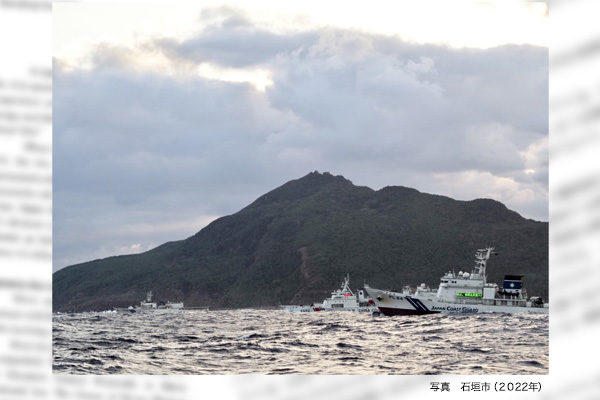On May 3, a China Coast Guard helicopter briefly violated Japan’s territorial airspace around the Senkaku Islands in Okinawa Prefecture. This is the first time that a Chinese helicopter has penetrated Japan’s airspace. The Chinese side claims that the China Coast Guard flew the helicopter to give a warning to a small civilian Japanese plane that flew around the Senkaku Islands. China has repeated its “salami tactics” to repeat small steps to accumulate fait accompli. The Japanese government protested the Chinese action as “extremely regrettable.” However, such conventional response makes little sense in deterring similar actions. I would like to call for a fundamental revision of the Senkaku defense posture.
Uncoordinated public relations responses
“While the Japan Coast Guard defends the Senkakus now, I, as a Japanese citizen, cannot leave everything to the coast guard and turn a blind eye on the situation,” an 81-year-old man who flew over the Senkaku Islands told the Yaeyama Nippo newspaper. “I carried out this flight because I wanted to make an impact.”
Having received information in advance on the man’s plan to fly over the Senkaku Islands, Japanese government officials were prepared for unpredictable developments. However, the public relations responses from the Japan Coast Guard, the Ministry of Foreign Affairs, and the situation room of the Prime Minister’s Office that deals with emergencies were uncoordinated, leading the National Security Secretariat to arrange the government’s response.
As far as North Korea’s ballistic missile launch is concerned, the government’s response has become swift, including an emergency gathering led by the chief cabinet secretary. But the government’s response to the Senkaku issue has been insufficient. Partly because the incident this time came during the long weekend, neither Prime Minister Shigeru Ishiba nor Chief Cabinet Secretary Yoshimasa Hayashi responded directly to what happened.
“Even though the Senkaku Islands are a Japanese territory, the Japan Coast Guard and its Chinese counterpart engage in a face-off over the islands on a daily basis,” a Japanese government official said. “Despite the dangers of the waters, the Japanese government has no authorities to stop even civilian sightseeing flights. Is this okay?”
The Senkaku Islands are inherent part of Japan’s territory, but all of them, including the largest, Uotsuri Island, are uninhabited. In reality, Japan only has control over the territorial waters around the islands. China Coast Guard ships have frequently intruded into the Japanese territorial waters to challenge the Japanese control, while enhancing their weapons gradually. Amidst that accumulation of events, this airspace violation occurred.
Station security personnel on Senkakus
In 2020, Okinawa Prefecture’s Ishigaki City that administratively includes the Senkaku Islands changed the islands’ administrative subdivision name from Tonoshiro to Tonoshiro-senkaku and applied for a national government’s permit to land and install markers bearing the new name. But the government rejected the application.
“Simply defensive posture limits what the government can do. We must go on the offensive,” another government official said. “Unless we install the markers and station security personnel on the islands, Japan’s effective control of the islands remains hollow. If Japan stations security personnel, there could be a war. That level of resolve is necessary. Protecting territory demands such resolve.” Immediate action is required.
Takashi Arimoto is a Planning Committee member at the Japan Institute for National Fundamentals and a columnist at the Sankei Shimbun newspaper.


